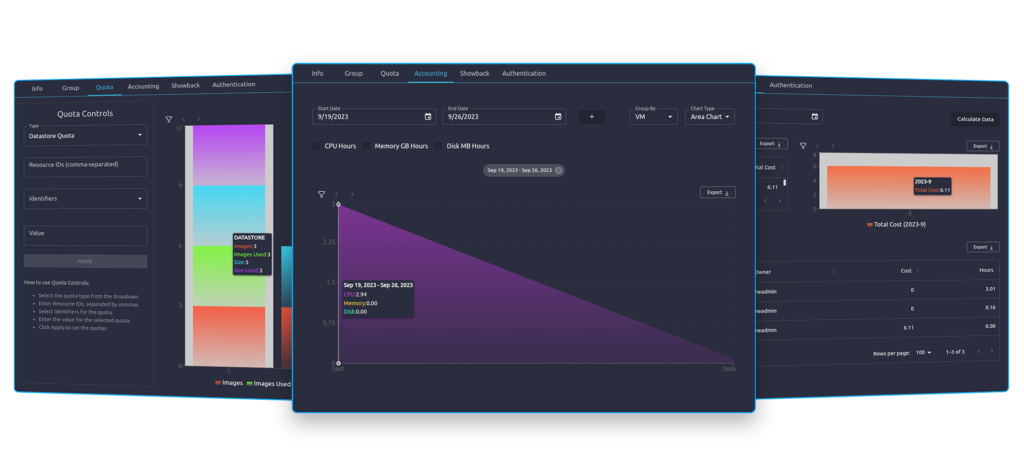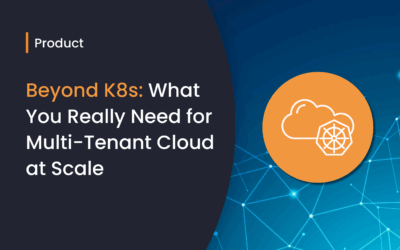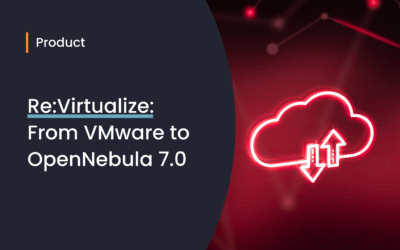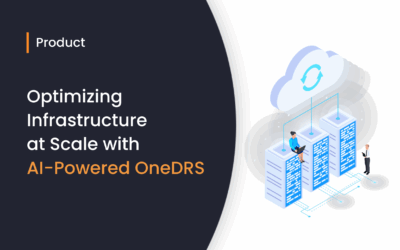What’s New in OpenNebula 6.8
We are proud to announce the general availability of OpenNebula 6.8 ‘Rosette’ Beta 1, the first beta version for 6.8, aimed at testers and developers to try the new features. All the functionality is present and only bug fixes will happen between this release and final 6.8. Please check the known issues before submitting an issue through GitHub. Also note that being a development version, there is no migration path from the previous stable version (6.6.x) nor migration path to the final stable version (6.8.0). A list of open issues can be found in the GitHub development portal.
OpenNebula 6.8 ‘Rosette’ is the fifth stable release of the OpenNebula 6 series. This version of OpenNebula focuses on features to improve the end-user experience as well as to optimize the use of the HW resources in KVM-based infrastructures. There are three significant features we would like to highlight:
- The first highlight is the addition of the Virtual Datacenter (VDC) and User tab to FireEdge Sunstone. As you may know, we are working hard on replacing the eyes of OpenNebula, Ruby Sunstone, which has served well for over a decade. FireEdge Sunstone is starting to exhibit a high percentage of the needed functionality, as well as starting to expand the functionality given by Ruby Sunstone. An example is the new User tab, which also includes Accounting and Showback information that can be exported and presented in several different charts. Also, the Quotas subtab has undergone a face-lifting, with a more comprehensive way to convey information.
- The second highlight is related to Backup functionality, with the introduction of Backup Jobs. Backup Jobs enable the definition of backup operations that involve multiple VMs, simplifying the management of your cloud infrastructure. It lets you establish a unified backup policy for multiple VMs, encompassing schedules, backup retention, and filesystem freeze mode, as well as maintain control over the execution of backup operations, ensuring they do not disrupt ongoing workloads. Moreover, it allows for the monitoring of the progress of backup operations, essential to estimating backup times accurately.
- And third and last, but not least, there have been a myriad of improvements in the KVM drivers. To name a few: now it’s possible to fine-tune the selection of CPU flags, specify io_uring driver for disks, define a custom video device for VMs, and automatically define default set timers to improve Windows performance. These options have been implemented in the driver, and the ones where it makes sense, are already exposed through Sunstone. Both flavors 🙂
As a bonus, the scheduler can be now configured to reach out to an external module (with a well-defined REST API) to get recommendations on initial VM placement. The motivation behind this new feature is to able to integrate OpenNebula with different Machine Learning modules that can optimize different metrics to optimize a given criteria or set of criteria: reduce energy consumption, reduce latency with respect to end user, reduce overall infrastructure cost, etc.

As usual, OpenNebula 6.8 is named after a Nebula. The Rosette Nebula (also known as Caldwell 49) is an H II region located near one end of a giant molecular cloud in the Monoceros region of the Milky Way Galaxy. The open cluster NGC 2244 (Caldwell 50) is closely associated with the nebulosity, the stars of the cluster having been formed from the nebula’s matter.
We’d like to thank all the people who support the project, OpenNebula is what it is thanks to its community! Please keep rocking.
🚀 Download OpenNebula 6.8 and give it a whirl!




0 Comments